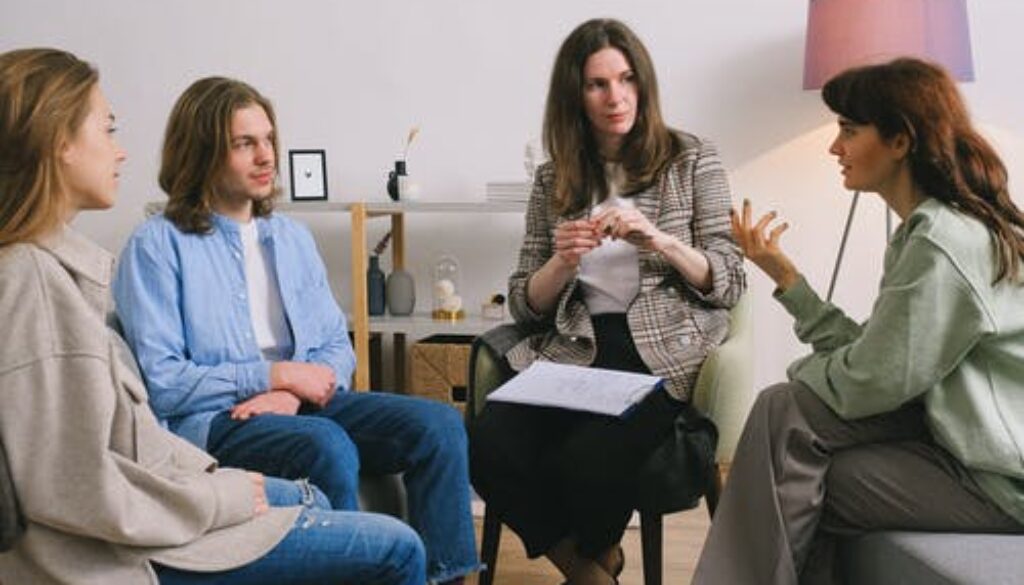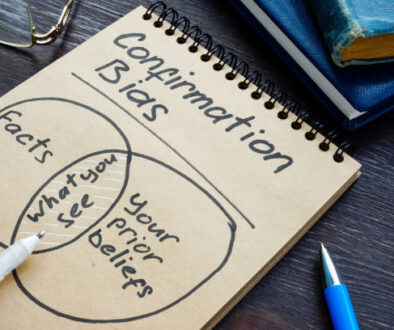Effective Listening
Menanteau Serfontein – 6 August 2021
“Wisdom is the reward you get for a lifetime of listening when you would have rather talked.” – Mark Twain
The greatest emphasis on effective communication throughout most of our life is on our ability to put our message across, using various methods including speaking and writing skills. There are countless courses available to improve your skills in this regard and looking good in the process. In fact, one of our previous Articles dealt with the topic entitled “Communicating Effectively“. It is indeed advantageous to develop skills required to communicate your messages well, however scant attention is paid to one of the most important elements of two-way communication which is your skill to listen well, in order to receive and understand messages accurately.
Effective listening skills also play a key role in the quality of our interpersonal relationships, because the one who always wants to speak and hardly allows the next person to get a word in sideways, might sometimes be entertaining, but misses out on what others think and feel. This often results in the perpetual talker making poor assumptions about what others are like and what their views are, which in turn could lead to people feeling that they are unimportant and inferior in the eyes of the talker. The talker consequently tends to make uninformed decisions affecting others, because he hasn’t made the effort to truly understand the views and feelings of others.
I believe that a lot more emphasis should be placed on the development of effective listening skills at school level and beyond. It has been shown that school-going learners with good listening skills, tend to perform better academically and even in other activities compared to the ones who don’t listen well.
Listening is so important that some of the top employers provide listening skills training for their employees. This is not surprising when you consider that good listening skills can lead to better customer satisfaction, greater productivity with fewer mistakes and increased sharing of information.
Listening is Not the Same as Hearing
Hearing refers to the sounds that enter your ears. It is a physical process that, provided you do not have any hearing problems, happens automatically.
Listening, however, requires much more than that; it requires focus and concentrated effort, both mental and sometimes physical as well.
Listening means paying attention not only to the content, but also how it is delivered, the language that is used, the tone and loudness of voice (how something is said, e.g. your tone of voice can indicate sarcasm, anger, affection, or the extent of the speaker’s confidence), and the body language such as facial expressions, posture and gestures. Is the person saying one thing, but their body language is conveying something else, e.g. are they telling you “yes” while shaking their head “no”? In other words, it means being aware of both verbal and non-verbal messages.
Listening is not a passive process. In fact, the listener should be as engaged in the process as the speaker. The phrase “active listening” is used to describe this process of being fully involved.
Dr Rachel Naomi Remen says “The most basic and powerful way to connect to another person is to listen. Just listen. Perhaps the most important thing we ever give each other is our attention.”
“One of the most sincere forms of respect is actually listening to what another has to say.” – Bryant H. McGill
Below is an illustration of the amount of time that we spend communicating:
 Based on the research of: Adler, R., Rosenfeld, L. and Proctor, R. (2001)
Based on the research of: Adler, R., Rosenfeld, L. and Proctor, R. (2001)
“Interplay: the process of interpersonal communicating (8th edn)”, Fort Worth, TX: Harcourt.
“Listening is key to all effective communication. Without the ability to listen effectively, messages are easily misunderstood.” – Dr Rachel Naomi Remen
There is no doubt that effective listening is an extremely important life skill.
One of the most critical skills in effective communication is “active listening”.
Developing this skill will help you to build trust, relationships, friendships and connections, because others feel respected that you are sincerely interested in what they are saying. This could open up opportunities to work with others, to identify and solve problems, to get work done quickly or to start new projects. It could even assist you in your career. It could also increase your knowledge and understanding of various topics.
With practise, anyone can develop and improve their active listening skills.
Principles of Effective Active Listening
HURIER Model of Listening
The acronym HURIER is often used to summarize a model of effective listening skills which was developed by Judi Brownell of Cornell University.
H – Hearing
Active listening is the ability to focus completely on a speaker, “hearing” what is said, not only in terms of physical hearing, but also picking up on non-verbal and other signals, e.g. tone of voice, body language, facial expressions, etc.
As a general principle, when somebody else is talking, we should listen carefully to what is being said and should not interrupt, talk over them or finish their sentences for them. Stop, just listen.
“Even a fool who keeps silent is considered wise; when he closes his lips, he is deemed intelligent.” (Proverbs 17:28)
“Know this, my beloved brothers: let every person be quick to hear, slow to speak, …..” (James 1:19)
In order to fully understand the speaker, we should focus on the speaker, what is being said and how it is said. Don’t be distracted by other thoughts or formulate how you are going to respond – this is not a function of listening.
A pause, even a long pause, does not necessarily mean that the speaker has finished. Be patient and let the speaker continue in his own time, because sometimes it takes time to formulate what to say and how to say it. Volume and tone both add to what someone is saying.
U – Understanding
Active listening requires a coherent understanding of what was communicated, and to respond thoughtfully, at the appropriate time. “The most basic of all human needs is to understand and be understood. The best way to understand people is to listen to them.” Ralph Nichols
R – Remembering
Active listeners use verbal and non-verbal techniques to keep their attention on the speaker. This not only supports your ability to focus, but also helps to ensure that the speaker can see that you are focused and engaged. Instead of thinking about and mentally rehearsing what you might say when the speaker is done, an active listener carefully considers the speaker’s words and commits the information to memory, before responding.
I – Interpreting
Interpretation of the message builds on, and enhances, understanding. Interpretation means considering factors such as the context in which the message was communicated. Importantly, here the listener also needs to be aware of, and avoid, any preconceptions or biases that the listener may hold that may affect how the message is interpreted.
E – Evaluating
Evaluating requires that the listener keeps an open mind on the messages they are receiving and doesn’t jump to conclusions about what is being said. Evaluate all the information and only then start to formulate a response. “Most people do not listen with the intent to understand; they listen with the intent to reply.” – Stephen R. Covey
R – Responding
Finally, your response should be well-measured and demonstrate that you have understood what was communicated. It may be necessary to use techniques such as clarification and reflection as part of the response, which means that when the person has finished talking you may need to clarify certain aspects to ensure that you have understood the message accurately.
It is important to realize however, that the processes involved do not happen in a linear way. An effective listener needs to be able to simultaneously hear, understand, interpret and evaluate the message to enable the listener to formulate a clear understanding and an appropriate response.
Practical habits of a skilful active listener
We don’t just listen with our ears but also with our eyes – we need to watch and pick up the additional information being transmitted via non-verbal communication such as gestures, facial expressions, eye-movements, etc.
Active listening includes making it easy for the speaker to be at ease and to speak freely. Examples include:
- Maintaining eye contact with the speaker as well as nodding and smiling, which indicate that you are engaged and that you are following/understanding what the speaker is saying, even if you don’t necessarily agree with what is being said.
- It is important to avoid distractions. Being still can communicate focus. To do this, try and avoid movements like glancing at your watch or phone, sighing, doodling, shuffling papers or tapping a pen.
- You should also avoid exchanging verbal or non-verbal communications with others listening to the speaker. This could be regarded as impolite and can make the speaker feel frustrated and uncomfortable. These behaviours disrupt the listening process and send messages to the speaker that you are bored or distracted.
- At appropriate times, it could be helpful to paraphrase in order to indicate that you understand what has been said or asking questions for clarification.
Active listening takes practise to improve and maintain. The more you use these techniques, the more natural they’ll feel and the better you will get at it.
You are encouraged to recognize the importance of active listening and to apply the principles of effective active listening in your daily communication with people.
Some of the content of this Article was derived from the following sources:
– Article entitled “Active Listening Skills: Definition and Examples” by Indeed Editorial Team, June 10, 2021 https://www.indeed.com/career-advice/career-development/active-listening-skills
– Article entitled “Listening Skills” by SkillsYouNeed https://www.skillsyouneed.com/ips/listening- skills.html#:~:text=Listening%20means%20paying%20attention%20not,verbal%20and%20non%2Dverbal%20messages
– Article entitled “The 10 Principles of Listening” by SkillsYouNeed https://www.skillsyouneed.com/ips/listening-principles.html






